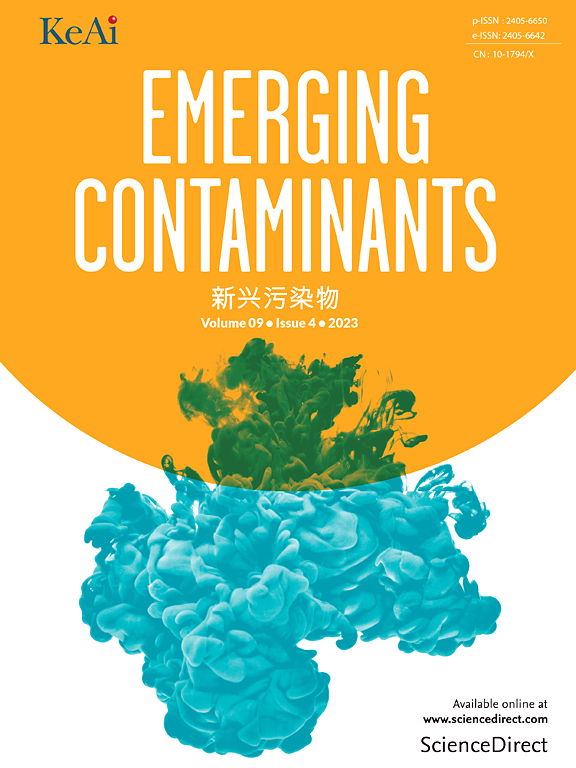老化和着色剂对聚烯烃环境降解的影响
IF 6.9
2区 环境科学与生态学
Q1 ENVIRONMENTAL SCIENCES
引用次数: 0
摘要
随着时间的推移,塑料垃圾会分解成微塑料(MPs)和纳米塑料,但它们的环境寿命在很大程度上仍然未知。了解塑料垃圾在环境中的降解仍然是塑料垃圾研究的一个基本问题。本研究通过分析从海洋环境中收集的44个自然老化的聚乙烯(PE)龙虾陷阱标签和一个旧的,严重降解的聚丙烯(PP)产品,突出了着色剂在降解过程中的重要作用。捕虾器的标签上标有它们的生产年份,表明它们在海洋环境中的时间,最古老的可以追溯到1983年,而PP桶已有40多年的历史,在阳光下经历了广泛的光降解。化学、热、机械和表面性能分析表明,PE标签的老化与其环境退化不成正比。在8种不同的标签颜色中,蓝色和绿色降解程度最低,而红色降解程度最高,强调了着色剂的影响。相比之下,PP样品表现出严重的表面降解,明显的碎片导致MP的形成,而其内部保持相对完整。这些发现强调了塑料降解过程中环境因素和材料特性之间复杂的相互作用。本文章由计算机程序翻译,如有差异,请以英文原文为准。

Influence of aging and colorants on environmental degradation of polyolefins
Plastic litter breaks down into microplastics (MPs) and nanoplastics over time, but their environmental lifespan remains largely unknown. Understanding the degradation of plastic litter in the environment remains a fundamental question in MP research. This study highlights the significant role of colorants in the degradation process by analyzing forty-four naturally aged polyethylene (PE) lobster trap tags collected from the marine environment and an old, heavily degraded polypropylene (PP) product. The lobster trap tags, marked with their production year, indicate their time in the marine environment, with the oldest dating back to 1983, while the PP tub, over forty years old, had undergone extensive photodegradation in sunlight. Chemical, thermal, mechanical and surface property analyses revealed that the aging of PE tags is not directly proportional to their environmental degradation. Among the eight different tag colors, blue and green were the least degraded, while red showed the most degradation, emphasizing the influence of colorants. In contrast, the PP sample exhibited severe surface degradation, with significant fragmentation leading to MP formation, while its interior remained relatively intact. These findings underscore the complex interactions between environmental factors and material properties in plastic degradation.
求助全文
通过发布文献求助,成功后即可免费获取论文全文。
去求助
来源期刊

Emerging Contaminants
Medicine-Public Health, Environmental and Occupational Health
CiteScore
10.00
自引率
6.70%
发文量
35
审稿时长
44 days
期刊介绍:
Emerging Contaminants is an outlet for world-leading research addressing problems associated with environmental contamination caused by emerging contaminants and their solutions. Emerging contaminants are defined as chemicals that are not currently (or have been only recently) regulated and about which there exist concerns regarding their impact on human or ecological health. Examples of emerging contaminants include disinfection by-products, pharmaceutical and personal care products, persistent organic chemicals, and mercury etc. as well as their degradation products. We encourage papers addressing science that facilitates greater understanding of the nature, extent, and impacts of the presence of emerging contaminants in the environment; technology that exploits original principles to reduce and control their environmental presence; as well as the development, implementation and efficacy of national and international policies to protect human health and the environment from emerging contaminants.
 求助内容:
求助内容: 应助结果提醒方式:
应助结果提醒方式:


